Can I Use Affinity Designer in My Laptop
Foldables, Dual Displays and More: The Wildest Laptop Designs Coming Soon
From Acer's Predator 21 X gaming beast to the triple-screened Razer Project Valerie , we've seen some bizarre laptops over the last few years. But those concepts and limited-release products were never really meant for mainstream consumers.
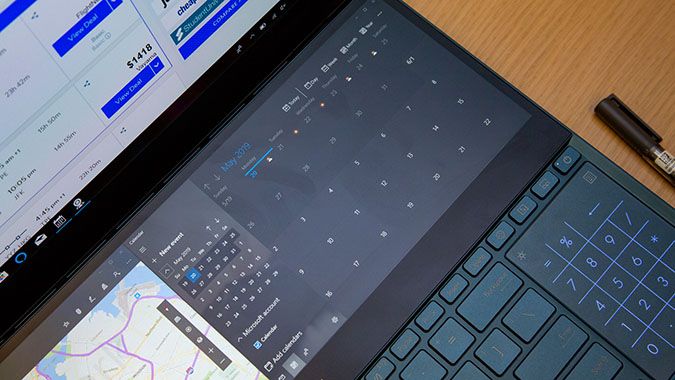
The laptops we're seeing today, however, aren't just over-the-top machines designed to make a company stand out at CES. No, this new wave of devices is paving the way for an era of dual-screen and flexible laptops. If all goes well in the coming months, you'll be replacing your traditional PC with one of these strange new devices.
For the past few decades, laptops have maintained a fairly standard look. Now, that's all changing. Several different form factors have sprouted up as a result of new technologies and a renewed focus on designing laptops for gamers and content creators. Here are all the new form factors PC makers are experimenting with, and the pros and cons for each.
Foldable display (Lenovo ThinkPad X)
Lenovo stormed ahead last month when the company unveiled the first foldable PC . While that machine's still under development, Lenovo expects to ship the unnamed device, which will be part of the ThinkPad X1 family, by 2020, outpacing Intel's own foldable-laptop projections .
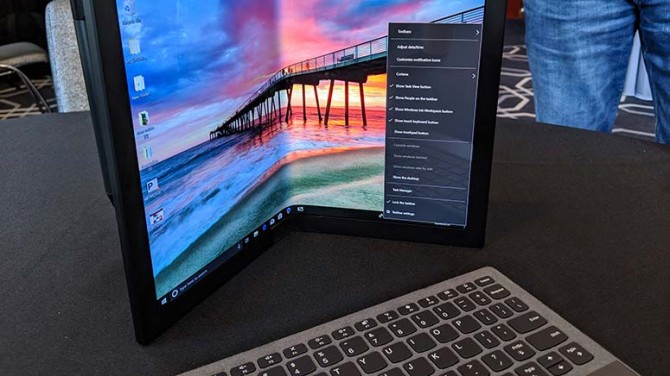
Like the beleaguered Samsung Galaxy Fold , Lenovo's PC has a single display that folds at the center. The obvious benefit is that users can fold the laptop into a compact, notebook-size form when traveling. The other main perk comes in the laptop's various modes, which allow you to use it as a book, tablet or laptop.
But there's a lot of skepticism surrounding foldable devices, and for good reason. Samsung gave the emerging category a bad name when the Galaxy Fold was delayed due to breaking review units. Lenovo promises a more durable laptop, but we remain only cautiously optimistic.
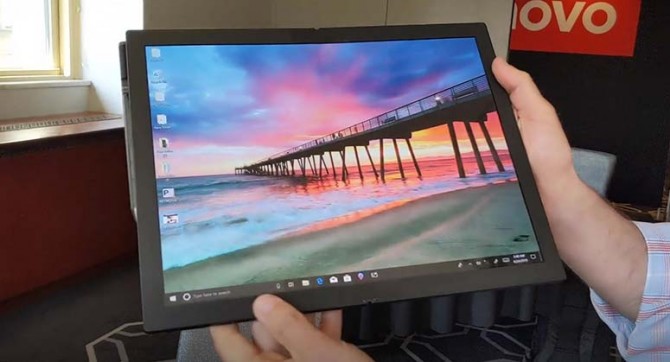
One inherent problem with foldable displays is that they leave a crease in the center of the screen. While Lenovo has reduced the effect, I could still spot a faint line when I looked hard enough with the device turned off.
Then, there are the frustrations we face with all tablets and detachables posing as laptop replacements. External keyboards are the hardest to overlook. Wireless keyboards generally offer a worse typing experience than integrated ones, and detachables have poor "lapability," or comfort when placed on your lap.
Full dual screen without a keyboard (Intel Twin River)
Lenovo already released a dual-screen laptop of sorts in the Yoga Book C930 . That Ultrabook packed a primary 10.8-inch display along with an E Ink panel on the deck. While innovative at the time, this device could soon feel obsolete if vendors pick up Intel's Twin River concept.
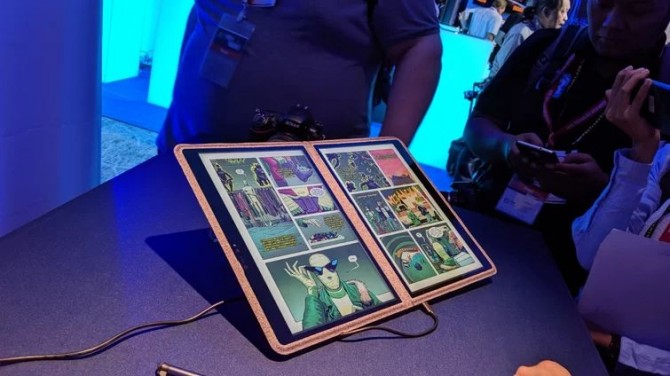
Unveiled at Computex 2019, Twin River takes the Yoga Book C930 and replaces its E Ink display with a full-1080p IPS panel. The laptop's twin 12.3-inch screens have an aspect ratio of 3:2, which is great for viewing documents or browsing the web. If that weren't odd enough, the entire laptop is wrapped in a fabric cover made of polyester, polyamide and lycra.
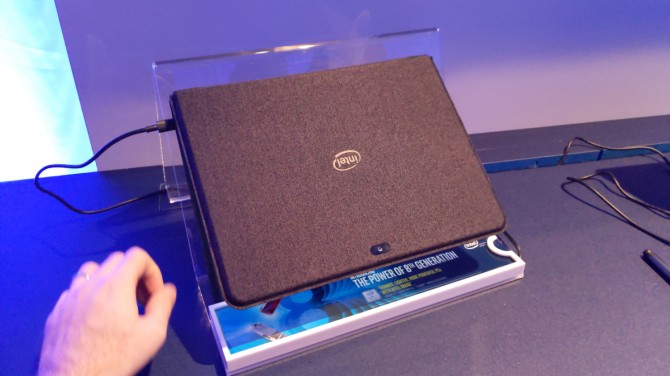
This form factor has a lot of the same advantages as the foldable display; you get tons of screen real estate to work with, all in a package that's easy to transport. But in this case, you don't have to overlook a crease in the middle of your screen, since a hinge separates these two displays.
Unfortunately, laptops like Twin River share the same disadvantages as laptops with flexible displays. The second screen on Twin River doesn't leave room for a keyboard, so lapability remains an issue. Of course, battery life and heat management are also major concerns, because you're powering twice as many high-res screens.
Partial dual screen with keyboard (Asus ZenBook Pro Duo)
Likely the first to enter this brave new world of laptops, Asus' ZenBook Pro Duo was the heartthrob of Computex 2019.
Yes, Asus already released a laptop with a secondary display in last year's ZenBook Pro 15 , but the Pro Duo feels like an entirely different animal. That's because it has two large panels: a 15.6-inch, 4K OLED panel and a 14-inch, 4K display. The smaller display is located on the top of the laptop, just above the keyboard (think Apple's Touch Bar but on steroids). Asus' ErgoLift hinge returns on the Pro Duo but now has the added benefit of angling the second display toward you.
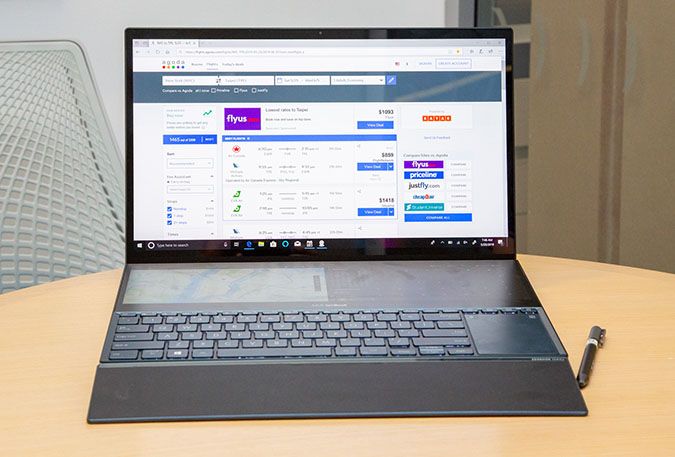
Asus says its ScreenPad technology was designed to improve multitasking, and that held true during our brief hands-on with the device. It doesn't hurt that Asus gives you quick access to certain apps, like Spotify and Microsoft Office .
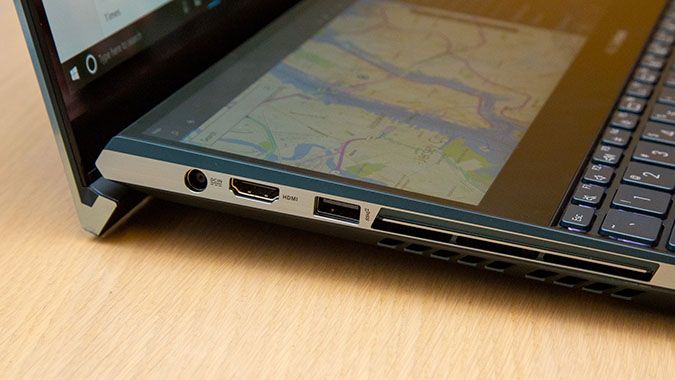
We pulled up three windows on the spacious screen, which let us control music, view our calendar and navigate Google Maps , all while keeping the primary display free to view full-screen content. I could also imagine a videographer or photo editor dropping tools down to the bottom screen while editing content on the gorgeous main panel.
We haven't yet tested the device, so we can't say for sure the effect of that second display, but battery life and heat are, again, a serious concern. I'm not a huge fan of the keyboard's placement on the front of the deck, either, because it doesn't leave room for a palm rest. Asus is throwing in an external one, but I'd prefer if I didn't have to lug that around.
MORE: Dual Screens, 5G and Creators: Best of Computex 2019
I also question the readability of the second screen. Even with the ErgoLift hinge, the panel doesn't seem to be angled enough for comfortable viewing when the primary display is at eye level. And unlike the foldable laptop, the Pro Duo's hinge creates a break between the screens, which can be distracting when you merge the two panels.
Angled second screen with keyboard (Intel Honeycomb Glacier)
My favorite, and possibly the strangest of these new designs, is a dual-screen laptop with a hinge that lets you angle the second screen however you'd like. Intel introduced this form factor at Computex with a concept gaming laptop called the Honeycomb Glacier .
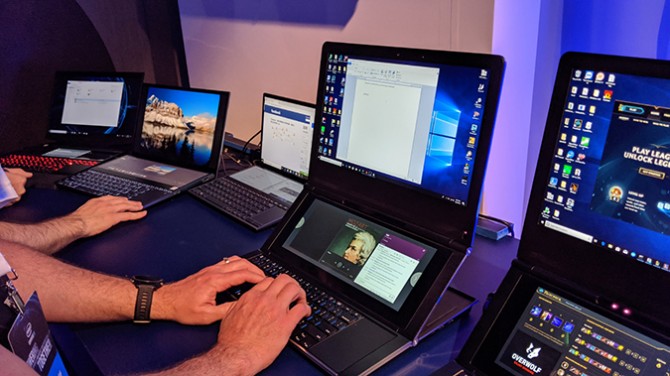
This unique laptop featured a standard 15.6-inch, 1080p display atop a secondary 12.3-inch automotive infotainment panel. Separating them is Tobii eye-tracking tech that lets you switch between apps without clicking.
This clever design solves the potential problems I mentioned with the ZenBook Pro Duo by positioning the second screen so that it's easily viewable under the main display. The 15-inch, FHD main top display is where a gamer could play in full screen while the bottom screen could display Twitch streams or walk-through videos.
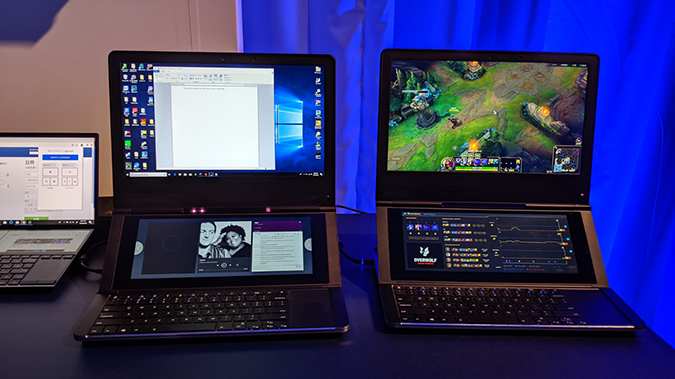
As you can see from these images, Intel's Honeycomb Glacier is as over-engineered as its name. You couldn't use this hulking beast on a small airplane tray or even on a desk in your college lecture hall. Along with portability issues, laptops with this form factor could suffer from the same problems, like poor battery life and inadequate heat management, as any dual-screen device.
Outlook
Each of these new form factors has its advantages and shortcomings, but what can't be denied is that this is a truly exciting time for laptops. In five years, the traditional laptop may be dead, or more likely, living alongside a new class of dual-screen devices. But for that to happen, Windows 10, along with programs and apps, will need to be optimized for dual- and flexible-screens.
So, which of these crazy concepts will prevail? Only time will tell, though I suspect that some of them will converge depending on the market's reaction. Whatever the case, the laptop industry has some compelling products in store for us in the coming years.
Credit: Laptop Mag

Phillip Tracy is the assistant managing editor at Laptop Mag where he reviews laptops, phones and other gadgets while covering the latest industry news. After graduating with a journalism degree from the University of Texas at Austin, Phillip became a tech reporter at the Daily Dot. There, he wrote reviews for a range of gadgets and covered everything from social media trends to cybersecurity. Prior to that, he wrote for RCR Wireless News covering 5G and IoT. When he's not tinkering with devices, you can find Phillip playing video games, reading, traveling or watching soccer.
Can I Use Affinity Designer in My Laptop
Source: https://www.laptopmag.com/uk/articles/laptop-form-factor-dual-screen-foldable
0 Response to "Can I Use Affinity Designer in My Laptop"
Post a Comment